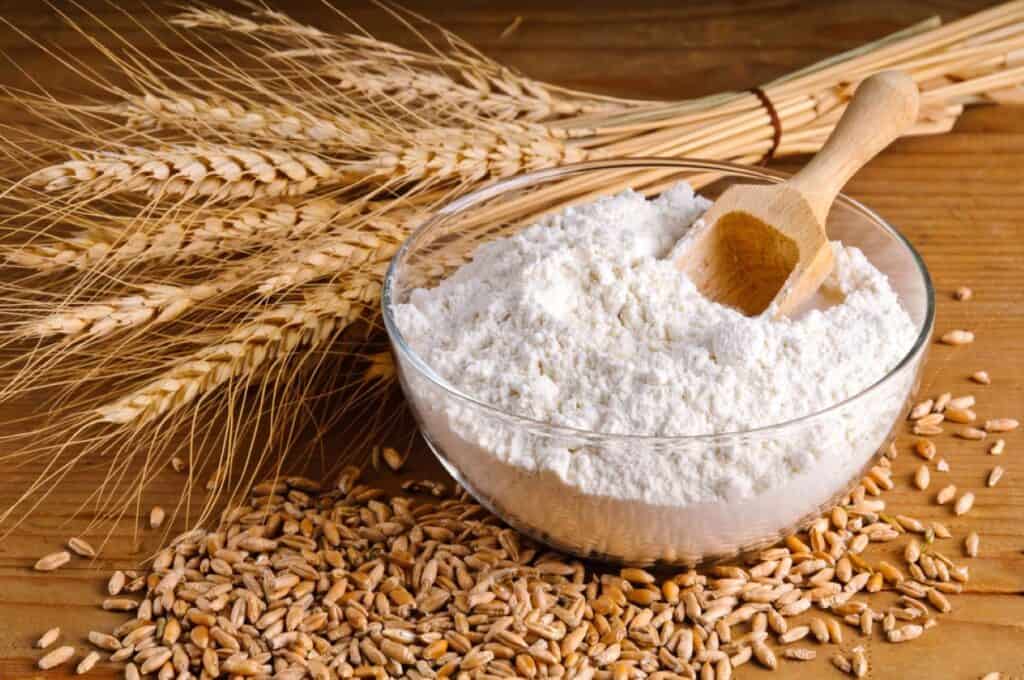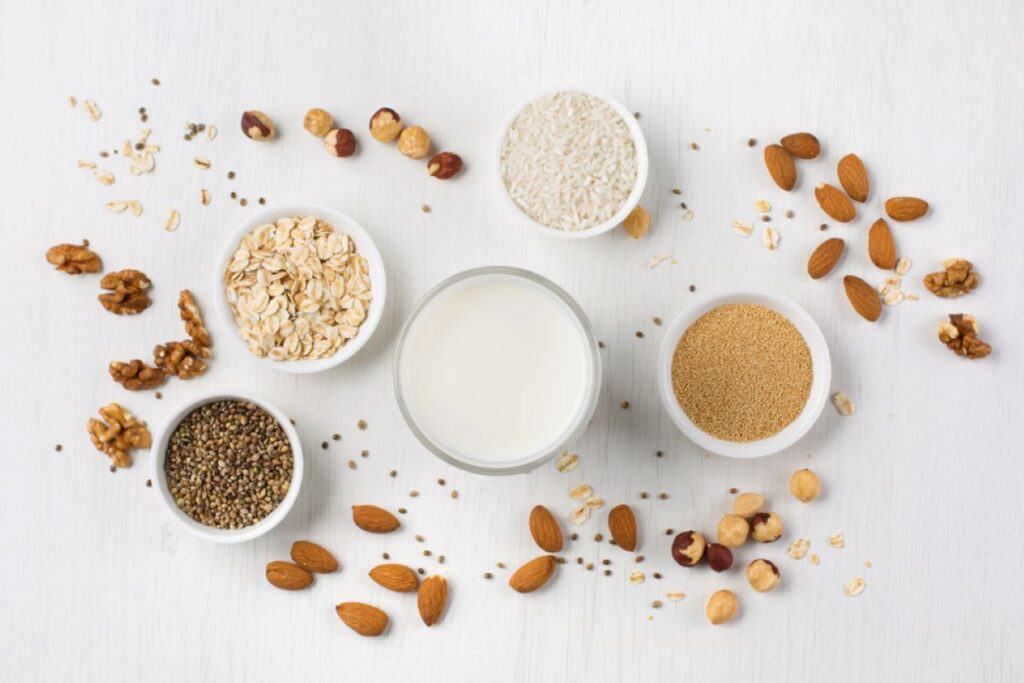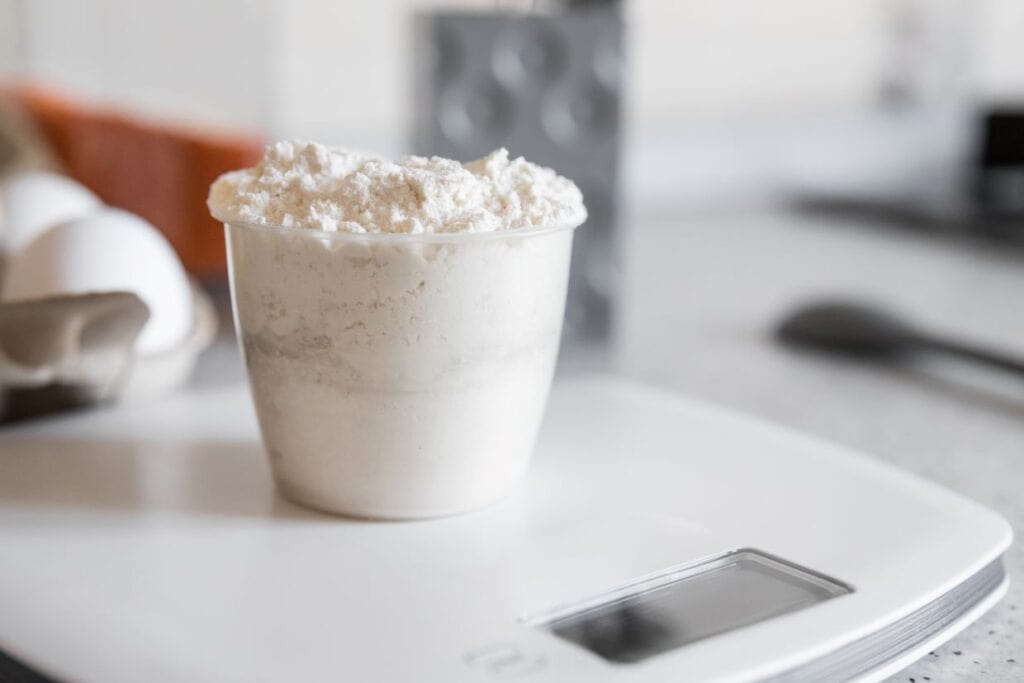For those who cannot use wheat flour due to dietary restrictions or preferences, finding a replacement is essential. It is important for maintaining the quality and texture of your baked goods.

These statements have not been evaluated by the Food and Drug Administration. Please see the disclaimer below for more information.
Whole wheat flour alternatives not only accommodate these needs but also offer unique flavors and nutritional benefits. Baking with whole wheat flour can be a fantastic way to enhance the nutritional value of your baked goods, but knowing how to properly substitute it is crucial.
Whether you’re looking for gluten-free options like almond flour, coconut flour or oat flour, it’s important to know how each one interacts with other ingredients in your recipe. This knowledge will help you make informed choices and ensure your baked goods come out perfectly every time.
Understanding whole wheat flour
Whole wheat flour offers a rich nutritional profile and has a unique role in baking. Exploring its impact on the texture and flavor of baked goods will help with understanding replacements.
Whole wheat flour is known for its high fiber content and rich, nutty flavor. However, it also contains gluten, which can be problematic for individuals with gluten intolerance or celiac disease. Additionally, some people might have wheat allergies or sensitivities that necessitate avoiding wheat altogether. If you suspect you have a food sensitivity, consider undergoing at-home food sensitivity testing to identify potential triggers.
Alternative flours for baking
Selecting the right type of flour can make or break your baking results. Here, explore how almond, coconut and oat flours can be used as alternatives to whole wheat flour.
Almond flour
Among the most popular substitutes for whole wheat flour is almond flour. Made from finely ground almonds, almond flour boasts a slightly sweet, nutty flavor and is rich in protein and healthy fats. It’s an excellent choice for those looking to reduce their carbohydrate intake, as it is significantly lower in carbs compared to whole wheat flour.
Almond flour can sometimes be used in a 1-1 ratio for most recipes, but you may need to adjust the amount of liquid and eggs to maintain the proper consistency. Due to its high-fat content, almond flour can produce denser baked goods, so it’s best suited for recipes like cookies, cakes and muffins.
When using almond flour, it’s important to note that it lacks the gluten that gives traditional wheat flour its structure. Therefore, you may need to add a binding agent such as xanthan gum or psyllium husk to help your baked goods hold together. Additionally, because almond flour is more moist than wheat flour, reducing the amount of oil or butter in the recipe can help achieve the desired texture.
“We use a blend of coconut flour and almond flour the most in baking. Though you can’t sub it in a 1:1 ratio with regular flour it does make for delicious baked goods. Coconut flour paired with a binder like eggs is a great way to reduce carbs and almond flour keeps recipes light with a dose of healthy fats.”
— Shelby, Fit As A Mama Bear
Coconut flour
Coconut flour is another excellent gluten-free option, made from dried and ground coconut meat. It has a mildly sweet flavor and is high in fiber and healthy fats. However, coconut flour is particularly absorbent, which means it behaves differently from other flours.
When substituting coconut flour for whole wheat flour, it’s essential to use only a quarter to one-third cup of coconut flour for every cup of whole wheat flour. Additionally, you’ll need to increase the number of eggs and liquid in the recipe to compensate for its absorbency. Coconut flour works well in recipes for pancakes, bread and cookies but may require some experimentation to get the texture just right.

Oat flour
Oat flour, made from finely ground oats, is naturally gluten-free provided it is made from certified gluten-free oats. Oat flour has a mild, slightly sweet flavor and adds a chewy texture to baked goods. It can be substituted for whole wheat flour in a 1-1 ratio, but it’s best to combine it with other flour for optimal results.
Oat flour works well in recipes for cookies, cakes and quick breads. It can be made at home by grinding rolled oats in a blender, making it a convenient and economical choice.
Making the switch
As you begin to incorporate these substitutes into your baking, it’s important to understand how they might affect the final product. Gluten-free flours often lack the elasticity provided by gluten, resulting in denser baked goods. Combining multiple types of flour, like in this keto flour, or using binding agents like xanthan gum or psyllium husk can help achieve a better texture.
Additionally, some alternative flours have distinct flavors that may alter the taste of your baked goods, so experimenting with different combinations can help you find the perfect balance. Many whole wheat flour replacements absorb more or less liquid than wheat flour, so adjusting the liquid content in your recipes is crucial for maintaining the desired consistency.

One key to success is to start with small substitutions. Begin by replacing one-third of the whole wheat flour in your recipe with an alternative flour and observe the results. If the texture and flavor meet your expectations, you can gradually increase the amount of substitute flour. This gradual approach allows you to fine-tune the recipe without drastically altering the final product.
Nutritional benefits of a whole wheat flour replacement
Another important consideration is the nutritional profile of the flour substitutes. For instance, almond flour is rich in protein and healthy fats, making it a good choice for those looking to increase their intake of these nutrients. Coconut flour is high in fiber, and oat flour offers a balance of fiber and protein.
Incorporating these alternative flours into your baking can also add variety to your diet. Each type of flour brings its own unique flavor and texture, allowing you to experiment with new recipes and create baked goods that are both delicious and nutritious. Whether you’re making a batch of almond flour cookies or whipping up a loaf of bread with coconut flour, you’ll find that these substitutes can add a new dimension to your baking.
Cost considerations
It’s also worth noting that some of these flour substitutes can be more expensive than traditional whole wheat flour. However, the nutritional benefits and the ability to accommodate dietary restrictions often make them worth the investment. For those who are new to using alternative flours, it may be helpful to seek out recipes specifically designed for these ingredients.
Final thoughts
Switching from whole wheat flour to a suitable alternative doesn’t have to be daunting. With a bit of experimentation and understanding of how each substitute behaves, you can continue to enjoy your favorite baked goods without compromising on flavor or texture.
Embrace the versatility of these flour replacements and discover a new world of baking possibilities. Whether you’re looking to accommodate dietary restrictions or simply want to try something new, these whole wheat flour alternatives offer a wealth of options to explore.
Trina Krug, MS, CDSP is a holistic nutritionist, recipe creator and advocate for human health. Her passion for low carb lifestyles, gluten free eating and real nutrition education has led to the creation of Trina Krug. She spends her time creating recipes, hanging out with her family on her farm and actively working on her Doctor of Science in Integrative Health.
These statements have not been evaluated by the Food and Drug Administration. The contents of this article, made available via Food Drink Life, are for informational purposes only and do not constitute medical advice. The content presented here is not intended to be a substitute for professional medical advice, diagnosis or treatment. Always seek the advice of a qualified healthcare provider with any questions you may have regarding a medical condition or dietary changes. Reliance on any information provided by this article is solely at your own risk.